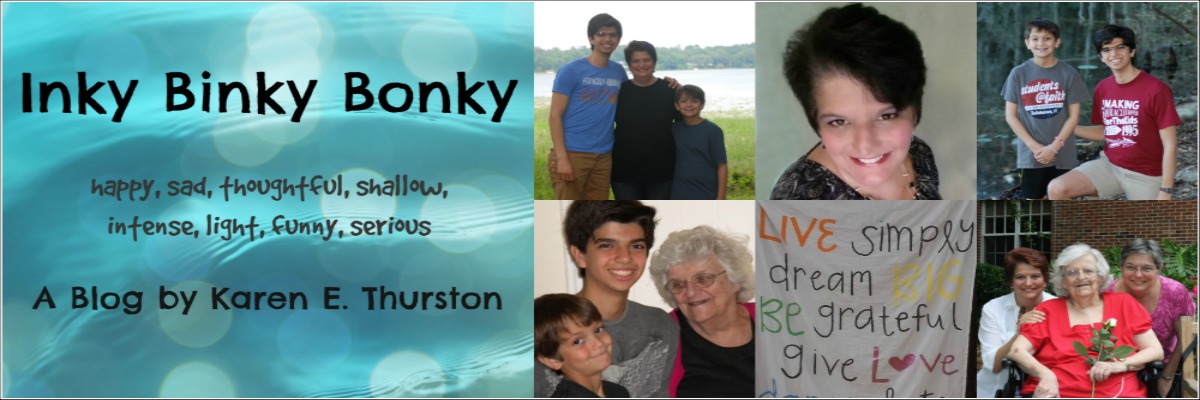“Because your whole world can change in 24 hours.” – The Paper (1994)
That’s Steve Catoe’s quote from his latest blog post, “24 Hours at Johns Hopkins.” I know that for Steve’s family, the past 24 hours have changed their whole world.
It is with a very heavy heart that I share with you that Steve died sometime between the late-night hours of Nov. 28 and early morning hours of Nov. 29. He was at his computer, doing what he does best, championing survivors and writing about congenital heart defects (CHD).
I’d like to think he left us in the wee hours of Nov. 29, the 66th anniversary of the Blalock-Taussig Shunt, which Steve has been writing about over the past two weeks.
I’d like to think he left us in the wee hours of Nov. 29, the 66th anniversary of the Blalock-Taussig Shunt, which Steve has been writing about over the past two weeks.
“We’re thinking positive thoughts,” his cousin Denise Baldwin told me this morning. “That he’s not in any pain and that he has a whole heart now.”
Just 11 days ago, Steve wrote a post called “Run the Race.” It’s an analogy of his life, living with CHD. He writes about the stumbles and falls he had throughout his life with tricuspid atresia. In true form, Steve talks about fighting the good fight, never giving up and crossing the finish line still standing.
If Steve was tapping away at his keyboard when he passed away, I think he got what he hoped for – he crossed the finish line still standing. Doing what he loved best, doing what he did best. Telling a great story and teaching us what it means to live, no matter what our struggles might be. He made a huge impact on the CHD community, speaking at several events and being there online for more than 400 followers each on Twitter and his blog, Adventures of a Funky Heart, and more than 800 friends on Facebook. He did fight the good fight for so many of us.
Steve was one of the very first people I “met” online when I signed up for Twitter in February 2009. I immediately recognized his CHD (tricuspid atresia), as it is the same heart defect as my friend and Broken Hearts of the Big Bend heart kid, Eliza, had. When Eliza endured her own battles, Steve took time to keep his readers updated on her status and ask for prayers for her. Later, he was a champion for another of our heart kids, McKenzie, who lost her fight to neonatal Marfan syndrome earlier this year.
In February 2010, Steve flew to Tallahassee, Fla., to attend and speak at Broken Hearts’ Regional Forum on Congenital Heart Disease. I got to meet Steve, and also his cousin Denise, who is the one who called me this morning to tell me about Steve’s passing.
At the Forum, Steve — a masterful storyteller with an amazing story to share — talked about his life and his parents and their courage and determination to give their son the very best care they could find.
I feel so fortunate and blessed to have known Steve and to call him my friend. We e-mailed each other often, talking about our blogs, the latest goings-ons in the online CHD community, and life in general. It was through conversations with Steve that I realized that Broken Hearts would be more effective and be of more benefit to those families we could touch in person.
I’ll miss Steve’s advice, his points of view on congenital heart issues, his storytelling, and his quirky sense of humor. He was a part of my everyday life. I already miss him and I wish I’d had a chance to say goodbye. Although knowing Steve, he prefers it this way.
When I got Denise’s call this morning, I was — am still — shocked. I knew Steve had been struggling with the ever-delicate hemodynamic balance that many CHD survivors cope with.
In Steve’s case, he was working with his cardiologist to adjust the diuretic he took for his congestive heart failure. One of the possible side effects of the drug is gout; and Steve recently had been fighting gout. They took him off the diuretic and his gout improved, but he knew his congestive heart failure was worsening because his ankles swelled, he had a constant cough and felt, in general, rundown and tired.
Denise said, at this point, they believe his heart had been working too hard lately, and it gave out. “But, he has his right ventricle now. His heart is complete,” Denise said, continuing to stay positive (which Steve would surely insist we do).
Although Steve may physically have had only half a heart, spiritually his heart has always been whole. I believe for Steve what I believe for my Dad. Just as my Dad is up there hanging out with all of the ancestors he researched and wrote about, I believe Steve is in Heaven with all the CHD survivors he championed and wrote about, and he’s telling all of them how much we love them and miss them here on Earth.
A few weeks ago, Steve and I were talking (e-mailing) about his upcoming Funky Heart posts. He was planning to crank it up a notch or two. And he did. Just last Friday, Steve wrote one of his most powerful entries about working toward a cure for congenital heart defects.
I know he’s up there talking with his fellow CHD angels, telling them how his readers better keep fighting the fight from sea to shining sea. So, for Steve, let’s keep fighting the fight.
Keeping Steve's family in our hearts and prayers. Arrangements are being made in Bethune, S.C., where Steve lived. I will try to post information when it becomes available.







